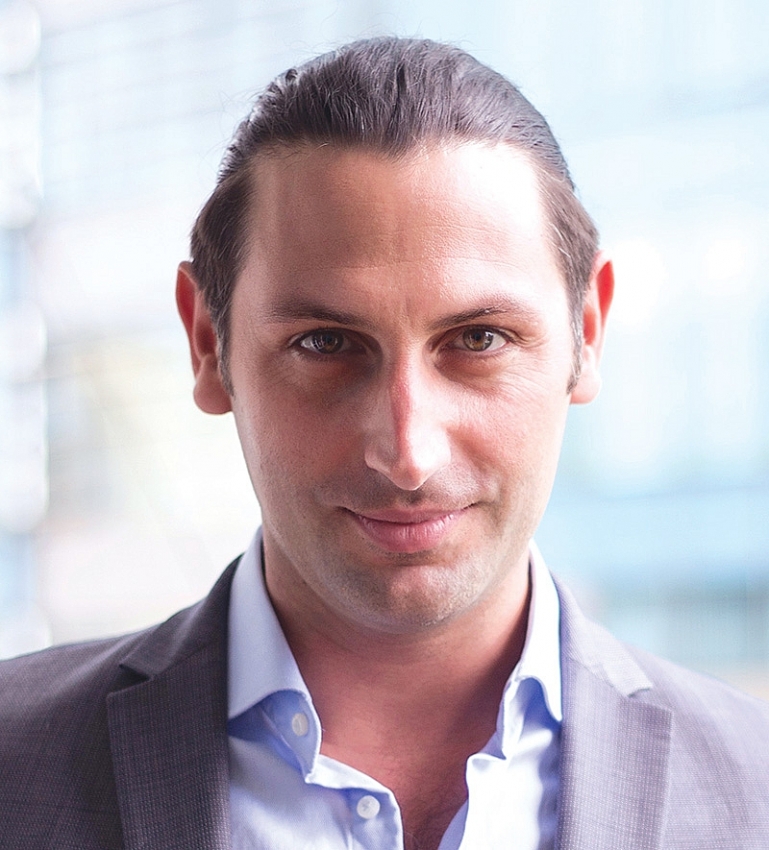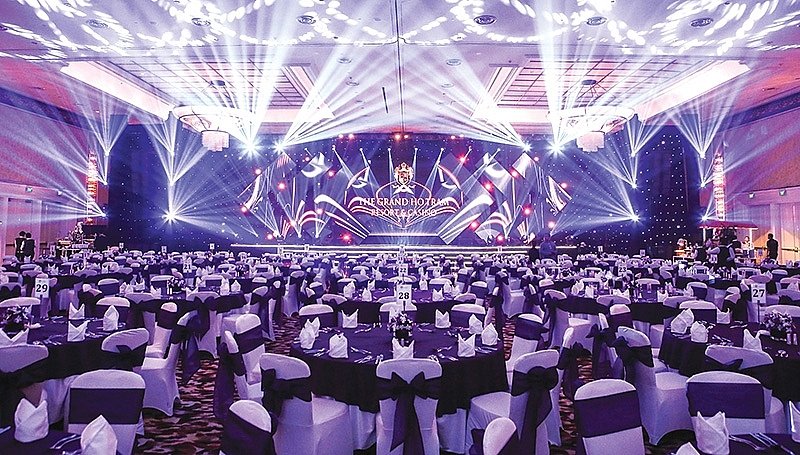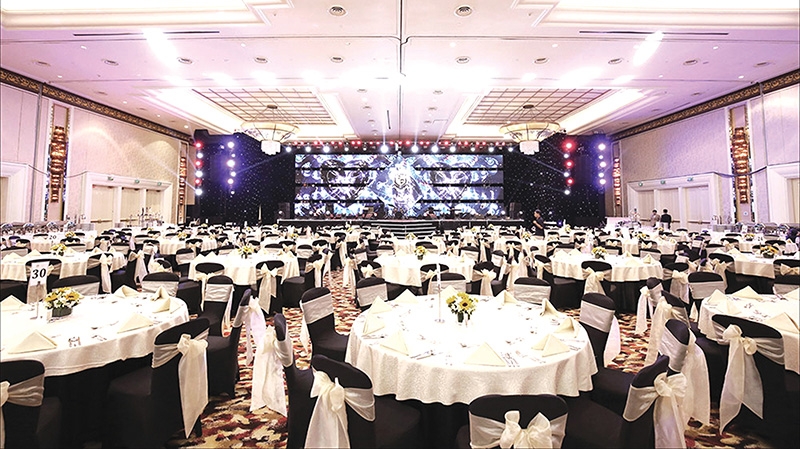Paving the way back to vibrant business
 |
| Mauro Gasparotti, director of Savills Hotels Asia-Pacific |
How should MICE tourism investors and operators prepare for the post-pandemic world?
MICE businesses, which include conferences and events, are expected to be one of the last activities to fully resume operations as they rely heavily on crowds of people getting together. Local MICE, which covers Vietnam and mainly involves local companies, is expected to return when the government deems it safe. Safety regulations will need to stay in place and companies will have to reduce the size of their gatherings.
This will affect many other sectors too, including real estate, where the launch of a residential project typically involves a crowded event. New formats need to be considered until consumers feel safe in enclosed areas and the government will allow it.
We also expect MICE to be hit by cuts in corporate spending in events and entertainments for at least the next two quarters. We will probably see the return of small-scale events first, as companies celebrate in smaller groups or by separate teams. International events held by multinational corporations with large numbers of international travellers will possibly return only after travel restrictions are lifted and corporate spending rises back to pre-pandemic levels, which may take a lot longer.
 |
What are your expectations for hospitality and tourism at the end of the year if Vietnam can continue to successfully contain the outbreak?
Recovery was initially expected to follow a “V” shape model, which is common in the travel industry and has happened in Vietnam in the past. For example, China’s and Russia’s inbound markets fell from June 2014 to June 2015 but both quickly recovered.
However, the situation now is very different, and I believe most hotels and resorts should not expect a full recovery until well into 2021 as the global economic impact and the evolution of the virus are both still uncertain.
Safety is a key factor in the travel industry and people will only travel again when they feel completely safe. As mentioned, we will rely on local demand first, especially on younger generations of independent travellers, followed by reopenings of some single key countries to slowly come back. That said, looking into the evolution of other countries like China where the government recently allowed hotels to reopen, it took only six weeks for occupancy rates to reach 32 per cent by the end of March, after the drastic fall in the month before, which is mainly due to local travellers. That has allowed hotels and resorts to regain business and reopen operations. We hope Vietnam will once again prove to be a successful example for other countries to follow.
Do you think now is the right time for hospitality investors, owners, and operators to plan for post-pandemic operations?
Hospitality was among the first industries to be hit hard by the pandemic and will likely be among those which take the longest to fully recover. All categories are affected, from international hotels, restaurant chains, multinational airlines to smaller family-owned restaurants and other types of accommodation. This has happened across the world now with broadly similar dynamics and business consequences. Most Western countries are still under lockdown with only a vague hope of reopening in May.
By responding early, Vietnam has been more successful than many countries in containing COVID-19, and the recent partial reopening of restaurants, coffee shops, and hotels have given the country a greater head-start over others. Hospitality is now seeing a careful recovery and hopes are high for things to return to normal.
The sector is slowly coming back, yet owners are still trying to figure out what will be the new normal and how long before demand gets back to pre-crisis levels. So far, strategies implemented by restaurants and hotels are slowdowns or closures to cut costs and retain key personnel while preparing for a reopening. This has helped overcome the short-term drop in revenue, but the real question is what level of demand they can expect in the coming months.
Unsurprisingly, in the short-term local demand will be highest and the only one. Creativity will be key to generating additional revenue. City hotels need to appeal more to local corporate guests and tourists. ‘Staycations’ show one way to do this, in which hotels offer experience packages, combining rooms with F&B and full access to facilities.
We expect to see restaurants to do the same, with more creative promotions to attract local guests such as cleverly themed weekend brunches. Airbnb establishments may also consider these types of packages, such as having a private chef on hand.
With regard to operating costs, owners can partially manage business activities in the short term with temporary layoffs and use of cash reserves, but for the longer term if demand is not rebounding fast, loan repayments and property rentals will have a great impact on the bottom line, especially for restaurants and bars. We are hoping that financial institutions and landlords will work with owners to find mutually beneficial solutions and play constructive roles in the recovery.
 |
What are your suggestions for the government and investors and owners?
It is definitely not easy for governments to reduce the chance of a second wave while at the same time pushing for early recovery. Both are necessary and so far, the choices made by the Vietnamese government have proven highly effective. We anticipate a recovery to follow three key parts.
The first is nurturing local demand by ensuring travel within Vietnam is safe. Vietnam has the advantage of an exceptionally large proportion of local travellers. In 2019, they represented 85 million out of 103 million total visitors compared to the 18 million international visitors.
Undoubtedly, local travellers are typically more price-sensitive than others, which might pressure hotels, resorts, and restaurants to use value-added promotions to stimulate demand.
Local flights will also play important roles even if air travel will probably not be the first choice and still be perceived as risky. The big short-term winners will be drive-by destinations, such as Vung Tau, Ho Tram, Mui Ne, Halong, Dalat, and Sapa.
The second part of recovery lies in the ability of governments, to reestablish international routes starting with selected countries. The choice will depend on their containment ability and proximity, with direct flights preferable. China and South Korea seem to be potential sources of international guests, given their recent steep reduction in new cases.
Some destinations like Bali and Thailand have already expressed interest in welcoming back Chinese visitors and, if proven successful, Vietnam may consider similar policies.
As China and South Korea accounted for 56 per cent of international arrivals in 2019, reopening to these sources would boost tourism, especially to destinations like Danang, Nha Trang, and Phu Quoc.
For Ho Chi Minh City and Hanoi, which both typically appeal the most to international business travelers, we must wait for reinstatement of visa policies in terms of both nationality and destinations of origin.
For example, corporate travellers coming via Singapore could be European or American passport holders, which adds a higher level of complication to any arrival policy and visa procedures.
This complexity will also largely and negatively impact international MICE business. On a positive note, Vietnam’s reputation for being safe has been burnished by its effective containment of COVID-19, which will in turn facilitate the return of international travellers.
The third part of recovery is when the pandemic is successfully halted and global tourism returns to pre-COVID-19 travel policies. Once global travel restrictions are fully lifted, there are two potential impacts on global hospitality: changes in traveller behaviors and the lingering effects of global economic slowdown.
What the stars mean:
★ Poor ★ ★ Promising ★★★ Good ★★★★ Very good ★★★★★ Exceptional
Themes: Vietnam Tourism Upswing
Related Contents
Latest News
More News
- Fusion launches festive wellness and dining packages in Vietnam (December 03, 2025 | 18:59)
- TD CASA and the rise of bespoke interior design in luxury living spaces (December 03, 2025 | 14:14)
- A season of warmth at InterContinental Phu Quoc Long Beach Resort (December 02, 2025 | 16:47)
- Hilton and Sun Group lead Vietnam’s next wave of premium travel (December 01, 2025 | 10:58)
- Young artists shine in Muong Thanh drawing contest (November 24, 2025 | 11:10)
- Celebrate the festive season with tropical flavour at Angsana & Dhawa Ho Tram (November 17, 2025 | 07:33)
- Maia Spa at Fusion Resort & Villas Da Nang wins at World Luxury Spa Awards (November 14, 2025 | 17:53)
- Phu Quoc celebrates passion as well as family pride (October 27, 2025 | 09:00)
- Vietnam named among world’s top four culinary destinations (October 24, 2025 | 17:09)
- Amanoi wins Three MICHELIN Keys at 2025 awards (October 21, 2025 | 16:49)

 Tag:
Tag:





















 Mobile Version
Mobile Version